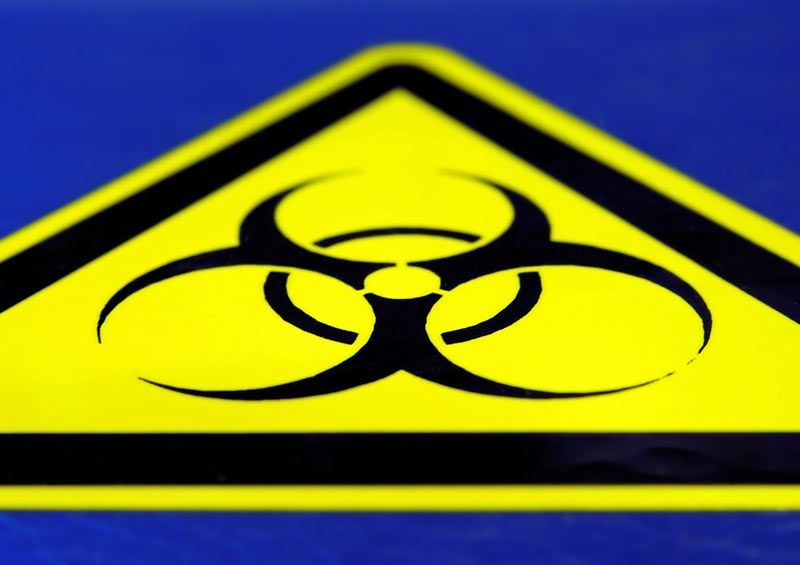
American Anthrax Terrorists Return

As we approach the 10-year anniversary of the Sept. 11 terrorist attacks, it seems Americans are "attacking" the country by sending anthrax-hoax threats, which cost both money and time in lost productivity.
This month two staff members for CBS talk show host Craig Ferguson received an anthrax threat in the mail. The suspicious powder turned out to be cornstarch, but the incident was "very, very scary" for the staff. The FBI is investigating both that incident and an earlier threat to another CBS late night comic, David Letterman, after an Internet jihadist said that Letterman's tongue should be cut out for insulting Islam. It's not clear if the threats are related.
Historically, however, it is not foreign Muslim extremists but instead Americans — often Christians — who have been responsible for the vast majority of anthrax terrorism. For example, Clayton Waagner, an anti-abortion activist, reportedly admitted sending nearly 300 anthrax hoax letters in the months after Sept. 11, 2001. Last year a Connecticut man, Roland Prejean, was charged with sending more than 50 anthrax hoax threats to government officials and buildings, and in April a Seattle woman sent a package of white powder and a note referencing anthrax to the White House; it was addressed to President Obama's wife and daughters.
Even when there is no obvious criminal intent, police must be cautious: Packages of white powder were sent to two Alaskan politicians on Aug. 15; a federal building had to be evacuated and a biological response team dispatched. The powder turned out to be a sample of concrete apparently sent by a builder or contractor.
Make no mistake: The threat to use anthrax and other biological weapons is not a prank but instead a serious terrorist act. The primary goal of political terrorism is not necessarily to destroy buildings or kill lots of people; it is to instill fear, uncertainty, and overreaction to the threat, and force the terrorized organization or government to expend vast resources defending against future attacks. That's one reason terrorism is so successful: you never know which threats are real and which are hoaxes, so you must be prepared for all of them. All fake bombs must be treated as real bombs, and all suspicious white powder must be treated as anthrax.
These terrorist hoaxes are very costly, both in terms of time and money. Each hoax can cost tens of thousands of dollars in investigation materials used, lost productivity in shutting down offices and buildings, overtime pay for police, and so on.By one estimate, the government has spent over $50 billion in the past decade investigating anthrax terror hoaxes and trying to prevent real attacks.
Anthrax terrorism is nothing new — and it is an almost exclusively American endeavor. In the weeks and months after the 9/11 attacks and anthrax scares, thousands of Americans called in fake bomb threats and anthrax hoaxes. From mid-October to Nov. 2, 2001 alone, the Postal Inspection System received more than 8,600 anthrax-related hoax threats.
Sign up for the Live Science daily newsletter now
Get the world’s most fascinating discoveries delivered straight to your inbox.
Many of these anthrax hoaxers are in professions we have come to see as heroes: Chicago county prosecutor James Vasselli resigned after admitting that he put an envelope of sugar in a coworker's desk; a Kentucky sheriff planted unmarked envelopes of crushed aspirin on desks; a Chicago postal worker wrote "antrax enclosed" on a package as a prank; an unnamed Washington, D.C.-Capitol Police officer was suspended for leaving a note and powdery substance in an office building; two Philadelphia police officers were charged with sending an anthrax hoax from their patrol car computer; and so on.
It's likely that the number and frequency of anthrax terrorism hoaxes will increase as we approach the 10-year anniversary of the Sept. 11 attacks. The irony is that this time it's not Saudi Arabian suicide bombers but instead everyday Americans who are attacking our country, spreading fear and costing taxpayers billions.
Benjamin Radford is deputy editor of Skeptical Inquirer science magazine and wrote about anthrax hoaxes in his book Media Mythmakers: How Journalists, Activists, and Advertisers Mislead Us. His Web site is www.BenjaminRadford.com.












